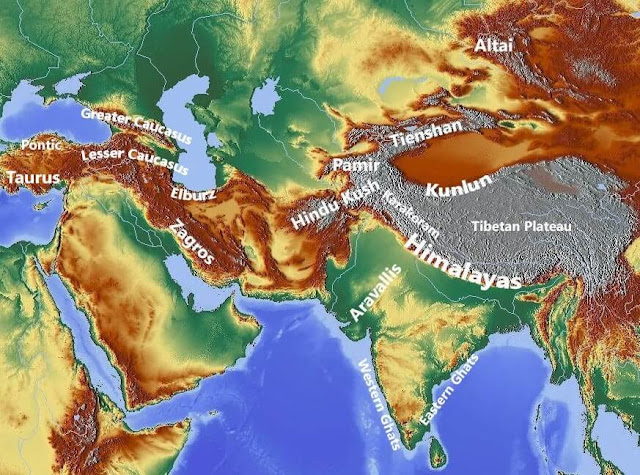Introduction
Many people are confused between the relationship between Sino-Tibetan, Han Chinese, Tibetan, Burmese, Naga, Cantonese, Mandarin etc. so this article clarifies by taking the Indo-European family as an analogy.
This article will also highlight the main linguistic differences between Indo-European and Sino-Tibetan language family.
Relationship
The hierarchical analogy is as follows:
Level | Group 1 | Group 2 |
| 1- Family | Sino-Tibetan | Indo-European |
| 2- People | Han Chinese | Germanic people |
| 3- Branch | Yue Chinese | West Germanic |
| 4- Sub-branch | Eastern Yue | North Sea Germanic |
| 5- Subgroup | Cantonese | Anglo(English) |
 |
| Migration path of Indo-European people in Europe |
Level | Group 3 | Group 4 |
| 1- Family | Sino-Tibetan | Indo-European |
| 2- People | Brahmaputran | Indo-Aryan |
| 3- Branch | Boro-Garo | Eastern Indo-Aryan |
| 4- Sub-branch | Central | Bengali-Assamese |
| 5- Subgroup | Boro | Assamese |
 |
| Migration path of Indo-European people to Central Asia and India |
 |
| Migration path of Sino-Tibetan people |
From the map above, we can see that the extremely high Himalayan, Pamir and Tian Shan mountains separated the Sino-Tibetan and Indo-European people from interacting with each other in ancient times before the silk roads were established.
Videos
The videos below illustrate the history of the Germanic people and Han Chinese respectively.
Language
|
Characteristics |
Sino-Tibetan |
Indo-European |
|
Tones |
Tonal |
Non-tonal |
|
Syllable structure |
Mono-syllabic |
Poly-syllabic |
|
Consonant endings |
Restricted |
Rich |
|
Noun classifiers |
Numerous |
Absent or marginal |
|
Grammar |
Simpler |
Complex (tense, gender) |
More than 90% of Sino-Tibetan languages are tonal languages except for a few languages/dialects which were influenced by the Indic languages and also Mongolic languages (Amdo Tibetan).
The consonant endings of most Sino-Tibetan languages are restricted to seven or eight sounds which are (m,n,ŋ)(k,t,p,h) such as mim, min, ming, mik, mit, mip, mih. (Note: k,t,p endings are unaspirated voiceless; h is a glottal stop).

Comments
Post a Comment